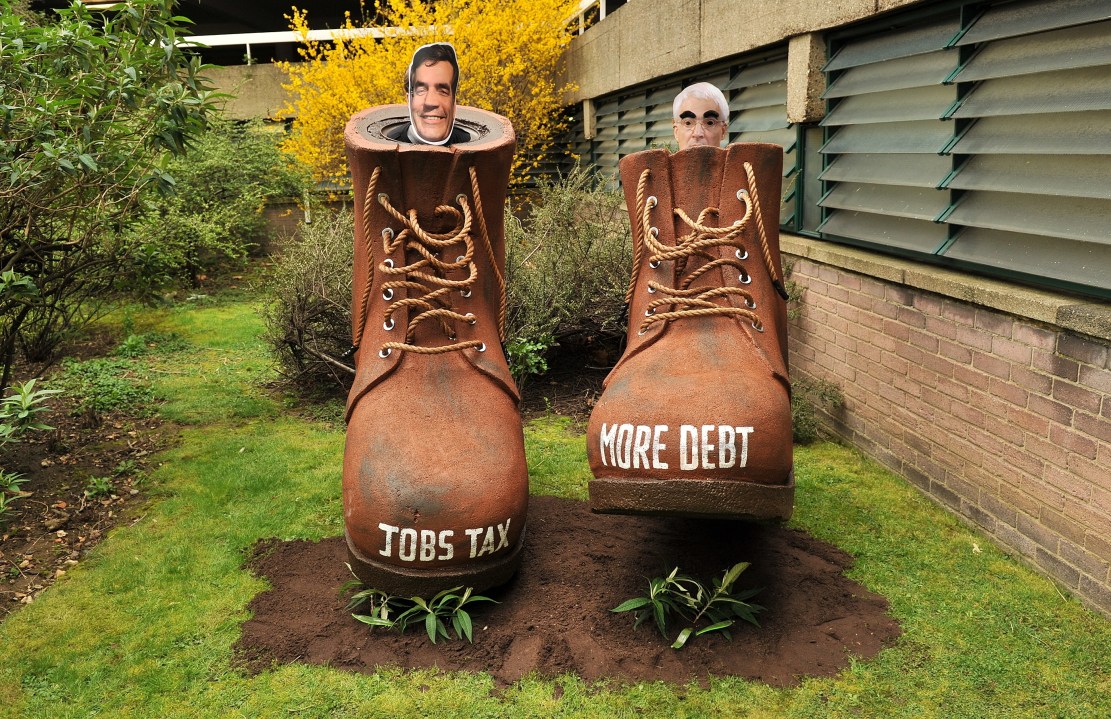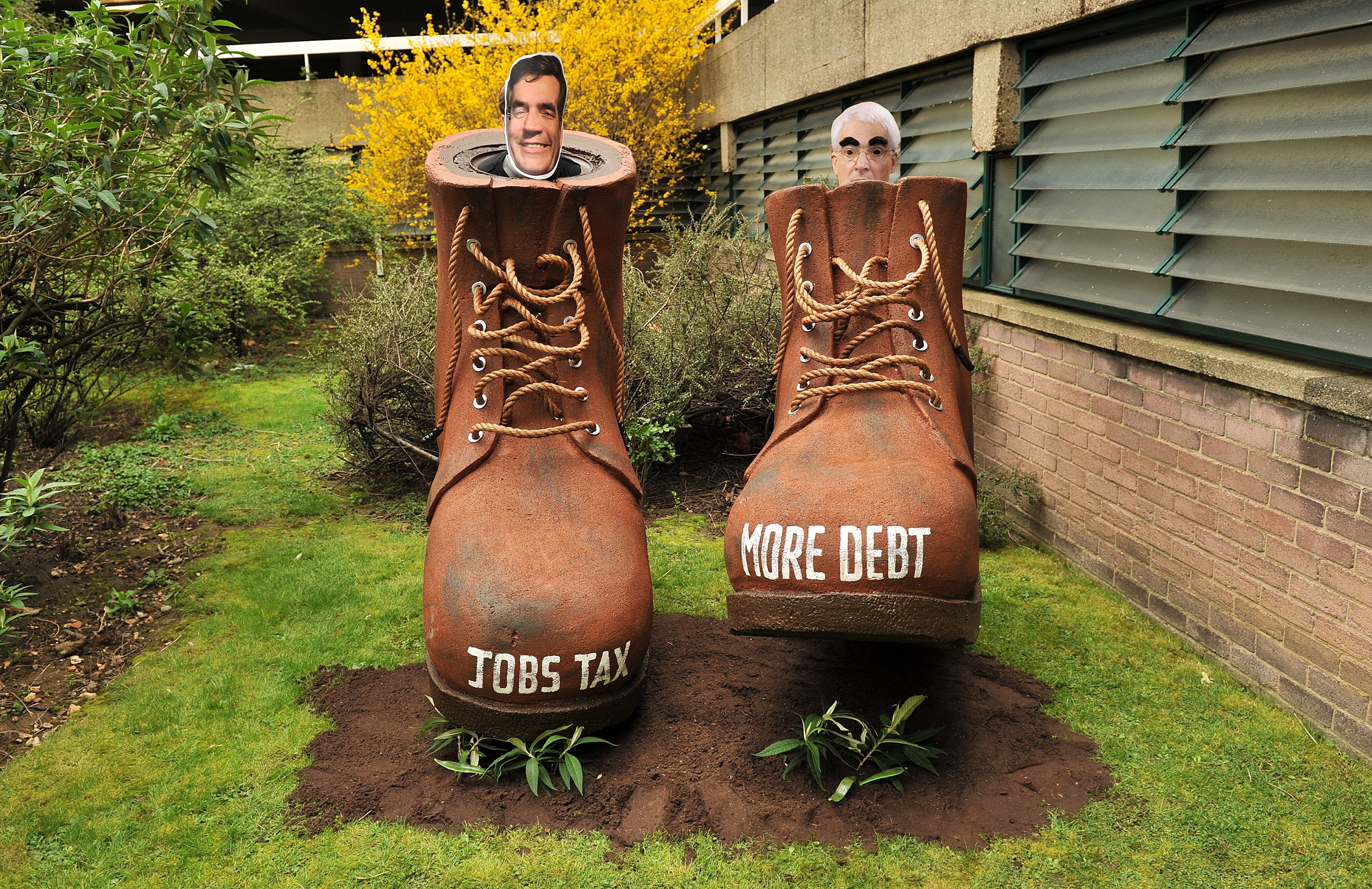 When Alistair Daring admitted last week that there would indeed be job losses arising from the proposed National Insurance hike, it would have struck Gordon Brown and Ed Balls like root canal surgery. This blows wide open the main part of Brown’s election deceit: asking the public to look at the advantages of the borrowing, and not contemplate the flip side to the debt coin. Not to ask where the repayments will come from, or the impact of those repayments on the jobs of the future. No wonder Darling is today being made to claim the opposite.
When Alistair Daring admitted last week that there would indeed be job losses arising from the proposed National Insurance hike, it would have struck Gordon Brown and Ed Balls like root canal surgery. This blows wide open the main part of Brown’s election deceit: asking the public to look at the advantages of the borrowing, and not contemplate the flip side to the debt coin. Not to ask where the repayments will come from, or the impact of those repayments on the jobs of the future. No wonder Darling is today being made to claim the opposite.
The grim truth is that every job “protected” now, due to debt, will be more than balanced out by money taken away from the economy in the form of the interest needed to serve that debt. All told, Brown’s “stimulus” will destroy more jobs than it creates. No one has much looked into this yet. In fact, until Darling blabbed, no minister acknowledged that today’s debt will have a real impact on jobs. As we approach the ‘payback’ period, the issue is worth exploring a little more.
The CEBR reckons the NI hike it will cost 57,000 jobs. Other estimates are that 12 percent of employers will cut recruitment and 8 percent will cut staff. When challenged with these figures when at the Treasury Select Committee, Darling forgot to lie. “We think the impact is manageable, it will be limited,” he said. In other words: he needs to fill the deficit. A tax on jobs will mean more unemployment. But it is a price worth paying to get the deficit down.
The phrase “price worth paying” is totemic to Brown and Balls, as it was the way that Old Labour used to caricature monetarism. Supply-side economists (or, as they’re called now, “economists”) argue that stability cannot be achieved without low inflation. To cut inflation, one reduces the supply of money in the economy – even if that means unemployment rising in the short term. Unemployment spiked in 1983 but, within six years, Britain hit a record for employment (75 percent) which has not been matched since. What the Tories did was called “economic long-termism”. And to Brown, it was – and is – an alien concept.
His economic “management” involved pumping the UK economy full of underpriced debt, labeling it “prosperity,” and blaming America when his bubble burst. Like the banks, he invented clever ways of justifying (and concealing) debt. And when the bust came, Brown wanted to pull off one last trick: to embark on the largest increase in debt in British history, without anyone asking what is on the other side of the debt coin.
The state to borrowing money now does not “create” jobs. Best it can do is move jobs – from the future, to the present. Except, due to the inefficiencies of the transfer process, this will always destroy more jobs than it creates. Future debt repayment costs will rise, and the money to meet those costs will be whisked away from the wallets of workers. This money would otherwise be spent in the economy, creating jobs and growth. Any competent economists knows this is the price of debt: the only question is whether this is a price worth paying. So when asked by the Treasury Select Committee, Darling confirmed that there would indeed be job losses as a result of the NI tax hike. It’s a matter of basic economics.
But Brown is keen for people (and, above all, the MSM) not to consider the flip side of his debt coin. His election strategy means looking at the jobs protected by the extra debt, without considering what it will cost in the future. His dividing line is whether it was “right to act to help the economy” – not whether the intervention today is worth the price that will be exacted tomorrow. As far as he is concerned, there is no tomorrow. No payback day.
He might get away with this, because Fleet Street is hardly choking with articles looking at the long-term impact of this extra debt. It’s partly a flaw in the UK political culture: by contrast, Obama had to commission a long-term study into the effects of his stimulus. Brown was able to double the national debt without a single study into what the net effect would be. Britain had no equivalent of the US Congress battles over the stimulus. Scrutiny of economic policy in Britain is dismal, which is why we’re vulnerable to such inept economic management.
As far as I am aware, only The Spectator commissioned a study into the long-term effect of the stimulus, from Oxford Economics, which uses the same economic modelling as the Treasury. The below is the outcome:

Policy Exchange did the same for National Insurance hike, and its model is here.
Now, there is no way that the Treasury does not have a similar study. As Chancellor, Darling will have a report putting a figure on the job losses – and you can bet that it’s not zero. When Brown and Balls were at the Treasury, they were careful not to let any such studies creep into existence.
The upshot: the price of spending borrowed money today is higher unemployment tomorrow. The Conservatives should start to make this point, and make it an argument about honesty. Brown will know that the debt means more jobs are destroyed than created. He has willfully made this trade-off. His dirty secret is that it is he – not David Cameron – who has calculated that higher unemployment is a price worth paying. It is becoming harder and harder for him to cover this up.
P.S. If CoffeeHousers will indulge me, this is how Bastiat put the “other side of the coin” issue it a while ago:
Full, delicious text here.“If the State opens a road, builds a palace, straightens a street, cuts a canal, and so gives work to certain workmen–this is what is seen: but it deprives certain other workmen of work–and this is what is not seen… At the moment when the emphatic words are pronounced, “The Assembly has adopted,” do the millions descend miraculously on a moonbeam into the coffers? Must not the State organise the receipts as well as the expenditure? While you state the destination given by the State to the millions voted, do not neglect to state also the destination which the tax-payer would have given, but cannot now give, to the same. Then you will understand that a public enterprise is a coin with two sides. Upon one is engraved a labourer at work, with this device,that which is seen; on the other is a labourer out of work, with the device, that which is not seen.”








Comments